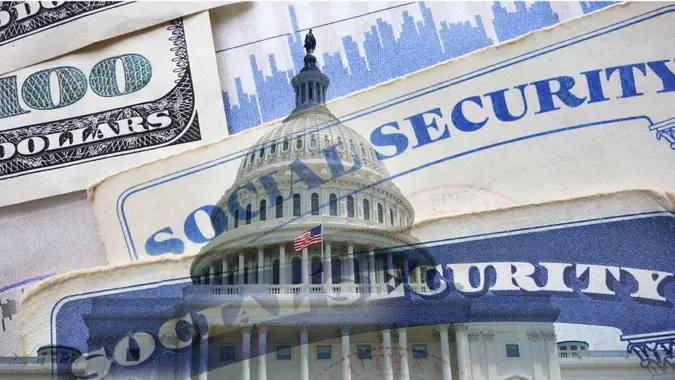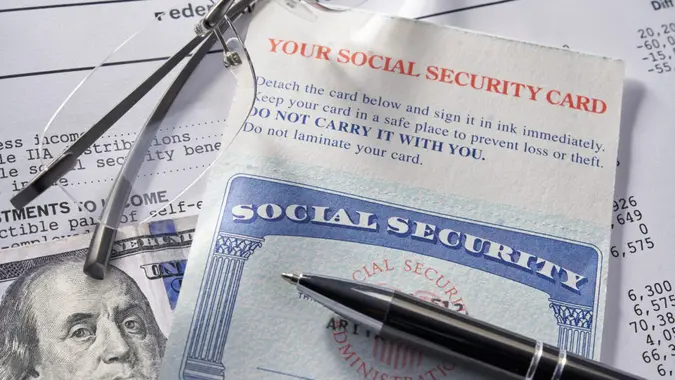Understanding the Social Security Trust Fund: Myths vs. Facts

Commitment to Our Readers
GOBankingRates' editorial team is committed to bringing you unbiased reviews and information. We use data-driven methodologies to evaluate financial products and services - our reviews and ratings are not influenced by advertisers. You can read more about our editorial guidelines and our products and services review methodology.

20 Years
Helping You Live Richer

Reviewed
by Experts

Trusted by
Millions of Readers
Social Security is America’s most expensive program, accounting for more than one in five dollars in the federal budget. A perennial political hot-button topic, Social Security is subject to political spin and fearmongering on both sides, which creates misinformation and mythology about the country’s largest social welfare program, which more than 74 million Americans rely on every month — especially when it comes to the trusts that fund it.
The following is a rundown of the most common myths surrounding the trust funds that prop up Social Security and the facts that all too often get lost in the shuffle.
Myth: Social Security Will Go Bankrupt in the Next Decade
Many people believe that Social Security will become insolvent in roughly 10 years, when the trusts that fund the program run out and the Social Security Administration (SSA) stops paying benefits. There’s some truth to this myth, but what’s often misunderstood is that the program relies only partially on its reserve trusts.
Fact: Without Action, Taxes Will Still Pay More Than 3/4 of Benefits
It’s true that the SSA projects that the Old-Age and Survivors Insurance and Disability Insurance (OASI and DI) Trust Funds will be depleted by 2034. However, even if Congress doesn’t act to replenish the trusts, which it always has in the past, incoming payroll taxes will still provide enough to pay 77% of promised benefits.
Myth: Congress Has Fixed This Problem Before, and Easily Can Again
America has stared down Social Security insolvency before and Congress acted to prevent it, most recently with the 1983 Social Security Amendments. Therefore, many believe that there’s a blueprint for confronting the impending shortfall and that Congress will act when it must.
Fact: The Challenge Grows Harder the Longer Lawmakers Wait
In the 1980s, lawmakers waited until the last moment to act because the solutions to replenishing the trusts — which include raising taxes, increasing the retirement age or reducing benefits — are all politically unpopular, which makes it tempting for lawmakers to kick the can down the road.
It worked in 1983, but a Cato Institute report outlines why demographic pressures — lower birth rates and longer lifespans — will require far fewer workers to support far more seniors in the future. The Bipartisan Policy Center concurs that the current looming crisis is far more acute and adds that Congress limits its options the closer it lets the moment of truth draw near. This time around, congressional procrastination will necessitate massive borrowing, devastating benefit cuts or, most likely, some combination of both.
Myth: The Trusts Are at Risk Because the Government Raided Social Security
Inherent — and often justified — mistrust of government fuels a common myth that lawmakers raided the trusts that fund Social Security, and that’s why they’re facing insolvency.
Fact: The Government Has Borrowed, but It Can’t Take
According to the Tax Policy Center, payroll taxes generate more revenue than is needed to pay Social Security benefits and the surplus is invested in special U.S. Treasury securities. Federal law prohibits the use of these funds to pay for anything other than Social Security, but the government can and does borrow from the funds. However, the Treasury is required to repay all loans, just as it does with any other bondholder.
More From GOBankingRates
 Written by
Written by  Edited by
Edited by 
























